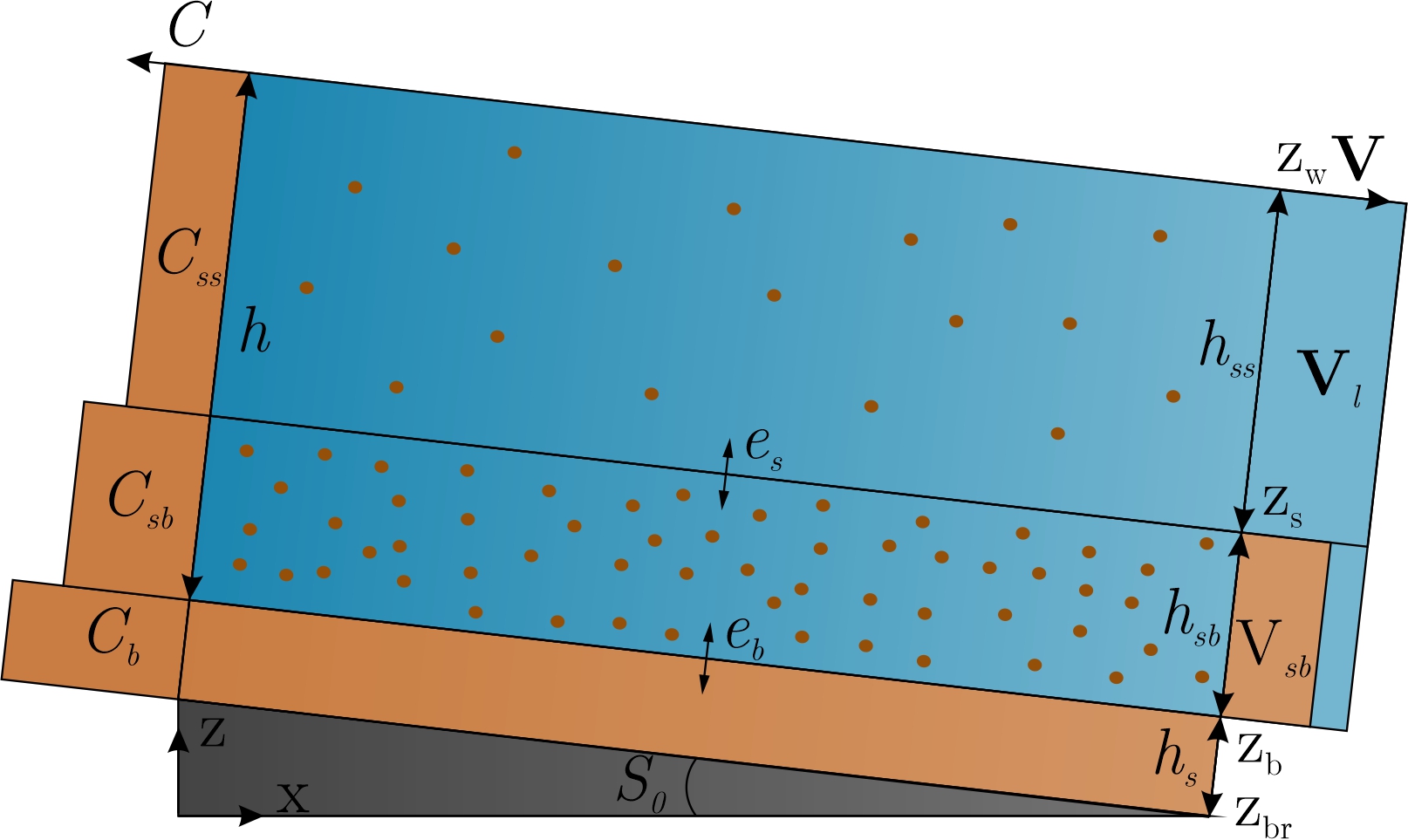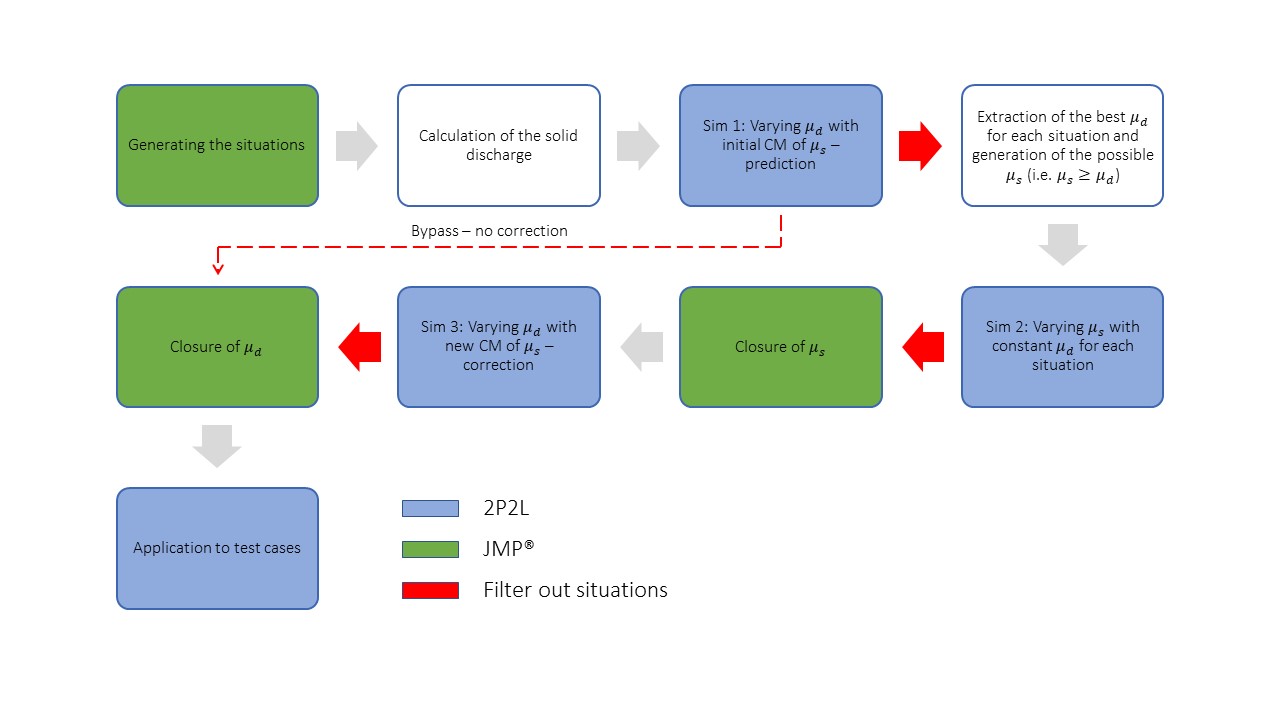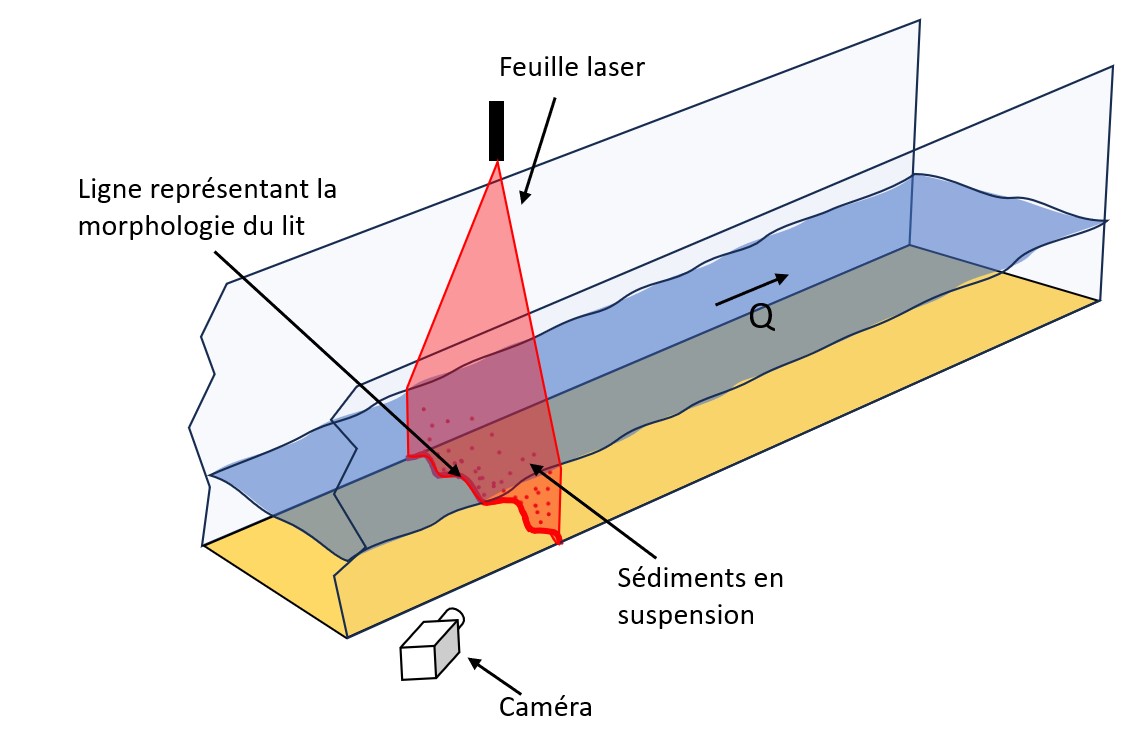Robin Meurice has been conducting a PhD thesis in fluvial hydraulics since 2019 entitled "Downstream hydromorphodynamic impacts of dam flushing: numerical and experimental modelling".
The main objective of this thesis is to develop a numerical model in finite volumes able to simulate transient flows highly laden with sediment such as dam flushes. This model is based on the widely used shallow water equations but extends them using the framework of the two-phase/two-layer (2P2L) approach. The water column is indeed split into two layers dedicated to suspension and bedload respectively. Within each layer, two different phases, i.e. water and sediment, are considered separately. Both phases have their own inertia, interacting with each other through drag.


This model counts more parameters than simpler models but some of these parameters do not find any closure formulation in the literature. A new method based on machine learning was hence developed to close tunable parameters of similar hydromorphodynamic models. These can hence be used in a predictive way when calibration data are poor.

To develop and validate this model, two experimental campaigns were carried out. The first one aimed to investigate the hydromorphodynamics of a dam break in a channel with a 90° bend and covered with sand. Based on previous work from his research team, laser profilometry was further developed to provide insight into morphological changes and processes during the flow.

The second set of experiments were part of the Master's thesis of Brieuc Bosseler and Guillaume Noël (2023). These experiments aimed to reproduce dam flushes in controlled conditions and to focus on the downstream hydromorphodynamics. Laser profilometry was used again and coupled to Ultrasonic Velocity Profilers in an innovative way to provide concentration measurements thanks to acoustic backscattering.

